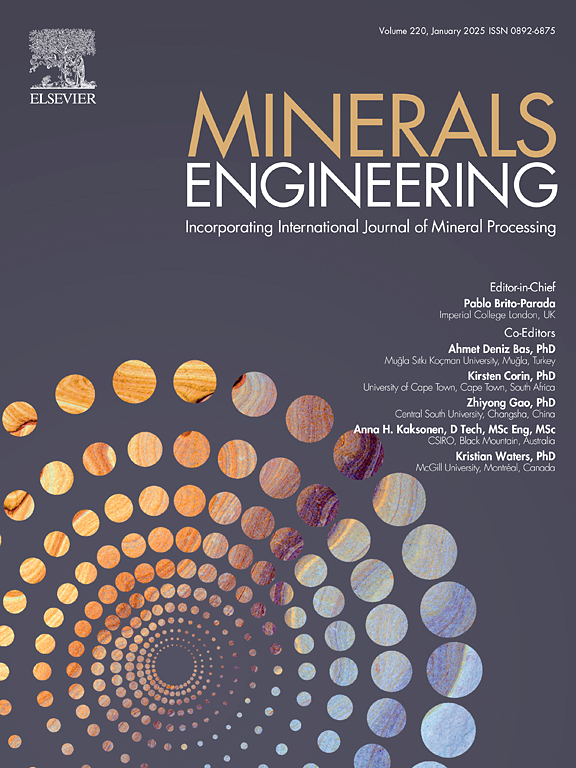A comprehensive review on the distribution behaviors of precious metals through pyrometallurgical processes and implications for recycling
IF 4.9
2区 工程技术
Q1 ENGINEERING, CHEMICAL
引用次数: 0
Abstract
Precious metals (PMs), particularly platinum group metals (PGMs), are of strategic importance due to their high supply–demand imbalance, scarcity, and functionality in high-tech fields. The global supply of PMs is constrained due to the rising demand in clean energy applications. Therefore, the recycling of PMs from secondary resources can effectively alleviate the risk of supply shortages. Pyrometallurgical technologies have attracted considerable interest because of their high recovery efficiency, extensive processing capacity, and minimal wastewater production. To enhance the recovery efficiency of PMs and promote the development of the underlying theories and technologies for pyrometallurgical enrichment, this review provides a comprehensive overview of the distribution behavior of PMs between slag and metal, with a particular focus on gold, silver, platinum, palladium, rhodium, and ruthenium. The factors, including gas partial pressure, temperature, slag composition, matte grade, and halogen elements, which have an influence on PMs distribution coefficients, are considered when designing slag types and setting smelting conditions. The characteristics of e-waste and spent catalysts differ significantly from those of ores. The distribution behaviors of PMs determine the recycling of PMs from spent catalysts and e-waste. Finally, the prospects of pyrometallurgical PMs recycling technologies are presented.

全面回顾贵金属在火法冶金过程中的分布行为及其对回收利用的影响
贵金属(PMs),尤其是铂族金属(PGMs),因其供需严重失衡、稀缺性和在高科技领域的功能性而具有重要的战略意义。由于清洁能源应用领域的需求不断增长,全球铂族金属的供应受到限制。因此,从二次资源中回收永磁材料可以有效缓解供应短缺的风险。火法冶金技术因其回收效率高、处理能力大、废水产生量少而备受关注。为了提高可吸入颗粒物的回收效率,促进火法冶金富集的基础理论和技术的发展,本综述全面概述了可吸入颗粒物在渣和金属之间的分布行为,尤其侧重于金、银、铂、钯、铑和钌。在设计熔渣类型和设定熔炼条件时,考虑了对可吸入颗粒物分布系数有影响的因素,包括气体分压、温度、熔渣成分、锍等级和卤素元素。电子废料和废催化剂的特性与矿石有很大不同。可吸入颗粒物的分布行为决定了从废催化剂和电子废物中回收可吸入颗粒物。最后,介绍了火法冶金可吸入颗粒物回收技术的前景。
本文章由计算机程序翻译,如有差异,请以英文原文为准。
求助全文
约1分钟内获得全文
求助全文
来源期刊

Minerals Engineering
工程技术-工程:化工
CiteScore
8.70
自引率
18.80%
发文量
519
审稿时长
81 days
期刊介绍:
The purpose of the journal is to provide for the rapid publication of topical papers featuring the latest developments in the allied fields of mineral processing and extractive metallurgy. Its wide ranging coverage of research and practical (operating) topics includes physical separation methods, such as comminution, flotation concentration and dewatering, chemical methods such as bio-, hydro-, and electro-metallurgy, analytical techniques, process control, simulation and instrumentation, and mineralogical aspects of processing. Environmental issues, particularly those pertaining to sustainable development, will also be strongly covered.
 求助内容:
求助内容: 应助结果提醒方式:
应助结果提醒方式:


